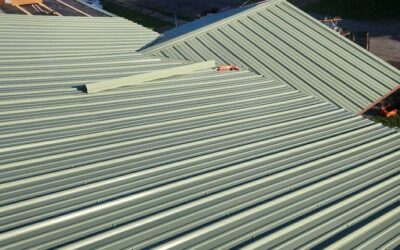The Essential Parts of a Roof: A Step-by-Step Guide with S&K Construction and Remodeling LLC
Roofing is one of the most important aspects of your home, providing protection from the elements and ensuring your home stays safe and dry. At S&K Construction and Remodeling LLC, an Owens Corning Preferred Contractor in Youngstown, Ohio, we understand the importance of using high-quality materials and skilled craftsmanship to ensure your roof lasts for years to come. In this blog, we’ll break down the essential parts of a roof and the step-by-step process involved in installing or replacing your roof.
Step 1: Tear Off (Removing the Old Roof)
Before any new roofing materials can be installed, we first need to remove the old roof. This process is called a tear-off, and it is one of the most crucial steps in a roof replacement project.
Why is Tear Off Important?
- Proper Adhesion: Removing the old shingles and any damaged layers beneath ensures that the new materials will properly adhere to the roof deck.
- Inspecting for Damage: The tear-off process allows us to inspect the underlying structure for any damage or rot. If there are issues with the roof deck, we can address them before installing the new roofing system.
During the tear-off, we remove everything from the existing shingles to the felt, nails, and any other layers that may have been used in previous roofing jobs. We always take great care to dispose of the debris responsibly, ensuring your property is clean and free of hazards once the tear-off is complete.
Step 2: Installing the Drip Edge
Once the old materials are off and the deck is exposed, we begin the process of installing the drip edge. A drip edge is a metal strip that is installed along the edges of the roof, both at the eaves (bottom edge) and along the rakes (the sloped sides of the roof).
Why is Drip Edge Important?
- Water Prevention: The primary function of the drip edge is to direct water away from the edge of the roof and into the gutters, preventing water from infiltrating beneath the shingles.
- Protects the Roof Deck: Without a drip edge, water can seep into the roof deck, leading to potential wood rot and other issues that may cause leaks.
The drip edge is installed before the underlayment and shingles, ensuring that it will properly divert water off the roof and protect the structure below.
Step 3: Ice Guard Installation
In colder climates, ice dams can be a serious problem. An ice guard (also known as an ice and water shield) is an essential component that helps prevent water from backing up beneath the shingles and causing leaks. This material is typically installed along the eaves, valleys, and other areas prone to ice dams.
Why is Ice Guard Important?
- Prevents Water Damage: Ice guard acts as a waterproof barrier, preventing water from seeping under the shingles and into your home.
- Protection Against Ice Dams: It’s especially important in areas where freezing temperatures and ice buildup are common. Ice guard can help protect the roof from water damage that can be caused by ice dams.
At S&K Construction and Remodeling LLC, we use only the best-quality ice guard materials to provide long-lasting protection against the harsh elements.
Step 4: Felt Underlayment
Next, we install felt underlayment over the roof deck. Felt is a layer of material that serves as an additional barrier between the roof deck and the shingles. This underlayment is critical in protecting your roof from moisture and providing extra insulation.
Why is Felt Underlayment Important?
- Extra Moisture Barrier: Felt acts as a moisture barrier, preventing water from reaching the deck and potentially causing rot or mold.
- Adds Durability: Felt underlayment helps the roof perform better over time, offering additional protection against the elements.
Once the felt underlayment is properly installed, it creates a smooth surface that helps the shingles adhere better and increases the overall durability of your roof.
Step 5: Nail Installation
Once the underlayment is in place, the next step is to secure everything with nails. Roofing nails are used to fasten the shingles to the roof deck. These nails must be of the correct size and type to ensure proper attachment and prevent issues like shingles lifting or blowing off during strong winds.
Why Are Nails Important?
- Secure the Shingles: Nails hold the shingles in place, ensuring that the roof remains secure and protected from the elements.
- Prevent Water Leaks: Properly nailed shingles prevent water from seeping beneath them and causing leaks.
At S&K Construction and Remodeling LLC, we use high-quality nails that are designed specifically for roofing applications, ensuring the best possible hold and weather resistance.
Step 6: Installing the Starter Shingles
Before the main shingles are installed, we begin with starter shingles. Starter shingles are specialized shingles that are installed along the eaves of the roof to create a solid base for the rest of the shingles. These shingles help seal the edges and provide extra protection against wind and water infiltration.
Why Are Starter Shingles Important?
- Seal the Edges: Starter shingles help seal the edges of the roof and prevent water from getting under the shingles.
- Improve Wind Resistance: Starter shingles are designed to withstand high winds, reducing the chances of shingles lifting or blowing off during storms.
Starter shingles are an important first layer, ensuring that the rest of the roof remains secure and well-protected from the elements.
Step 7: Installing the Shingles
Now comes the most visible part of the roofing process: the installation of the shingles. Shingles are the outermost layer of the roof and provide both protection and aesthetic appeal.
Why Are Shingles Important?
- Protect Against the Elements: Shingles act as the primary defense against rain, wind, hail, and UV rays, ensuring that your home remains dry and insulated.
- Curb Appeal: Shingles come in a variety of styles and colors, allowing you to choose a look that complements the design of your home.
At S&K Construction and Remodeling LLC, we offer a range of premium Owens Corning shingles that are designed to withstand the harshest weather conditions. Whether you prefer asphalt, architectural, or designer shingles, we have options that are both durable and visually appealing.
Step 8: Installing the Ridge Vent
Once the shingles are installed, we move on to the final step: adding the ridge vent. A ridge vent is installed along the peak (ridge) of the roof, allowing for proper ventilation by allowing warm, moist air to escape from the attic while drawing in cooler air from outside.
Why Is a Ridge Vent Important?
- Prevents Moisture Buildup: Without proper ventilation, moisture can build up in the attic, leading to mold growth, wood rot, and increased energy costs.
- Promotes Energy Efficiency: Proper ventilation helps regulate the temperature in your attic, keeping your home cooler in the summer and warmer in the winter.
Ridge vents are an essential part of the roofing system, ensuring your home stays comfortable, dry, and energy-efficient.
The Entire Process: From Tear Off to Ridge Vent
At S&K Construction and Remodeling LLC, we ensure that every part of the roofing process is completed with care and precision. From the initial tear-off to the final ridge vent installation, our team follows a systematic approach to ensure your roof is properly installed and performs at its best. Here’s a quick summary of the steps involved:
- Tear Off: Removal of the old roof and inspection of the deck.
- Drip Edge: Installation of metal edges to direct water into the gutters.
- Ice Guard: Applying a waterproof layer to prevent ice dams and leaks.
- Felt Underlayment: Adding a moisture barrier to protect the deck.
- Nail Installation: Securing the shingles with high-quality nails.
- Starter Shingles: Installing specialized shingles along the eaves.
- Shingles: The main roofing material that protects your home from the elements.
- Ridge Vent: Installing a ventilation system to prevent moisture buildup and improve energy efficiency.
Conclusion
A roof is more than just a layer of shingles; it’s a complex system of materials and techniques working together to protect your home from the elements. At S&K Construction and Remodeling LLC, we take pride in our expertise and commitment to using the best materials and methods for every project. Whether you’re looking for a roof replacement or a new installation, our team is here to guide you through every step of the process, ensuring that your roof provides lasting protection for your home.
If you’re in need of roofing services in Youngstown, Ohio, or the surrounding areas, don’t hesitate to contact us for a consultation. We’re here to help you get the roof you need to keep your home safe and comfortable for years to come.
 (440) 307-2060
(440) 307-2060

